1940s Style Guide
1940s Style Overview
When reflecting on the fashion of the 1940s style, it is common to envision the allure of the 1940s pin-up and the practical attire of the wartime Land Army girls. We often picture the ultra-feminine tea dance dresses adorned with floral prints, complemented by wedge shoes and brogues. However, this era also witnessed the ingenuity of designers who, constrained by austere regulations, developed elegant draping techniques and incorporated peplums and shoulder pads into even the simplest styles.
These innovations ultimately gave birth to the timeless film noir fashion that we admire today. The clothing of the 1940s serves as a striking illustration of how fashion is deeply influenced by politics, culture, and societal circumstances. This decade underwent significant transformations, and what we now nostalgically perceive as the quintessential 40s look was only prevalent for a few years, as Dior’s ground-breaking new look was introduced in 1947.
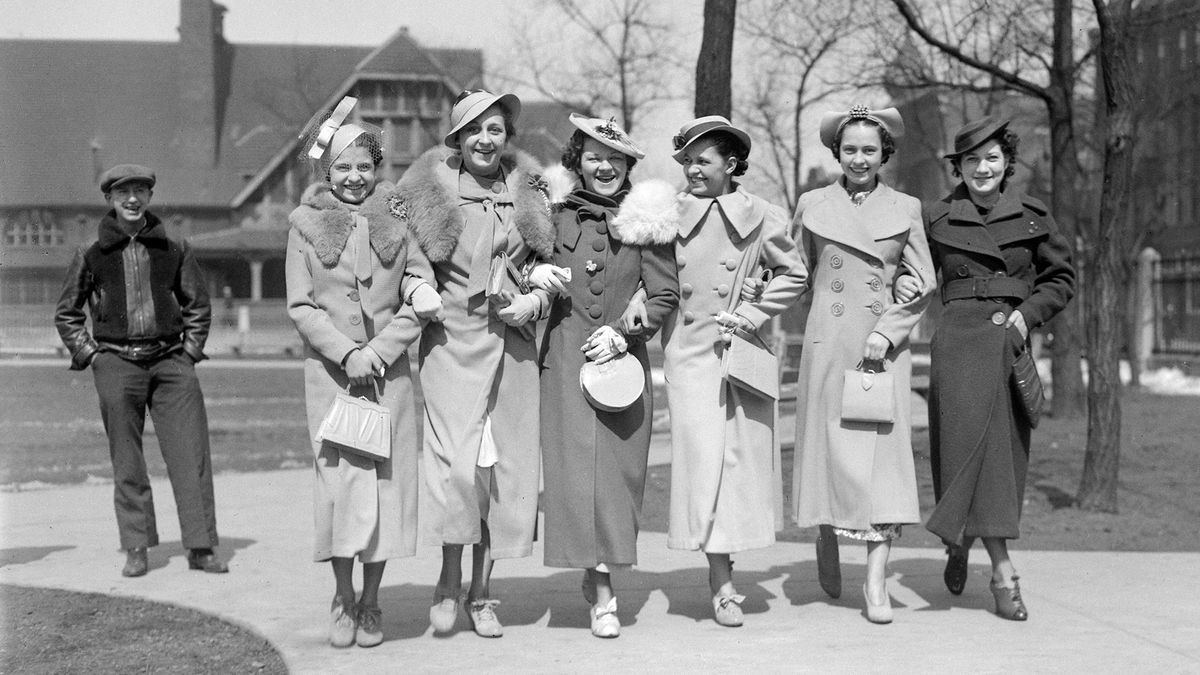

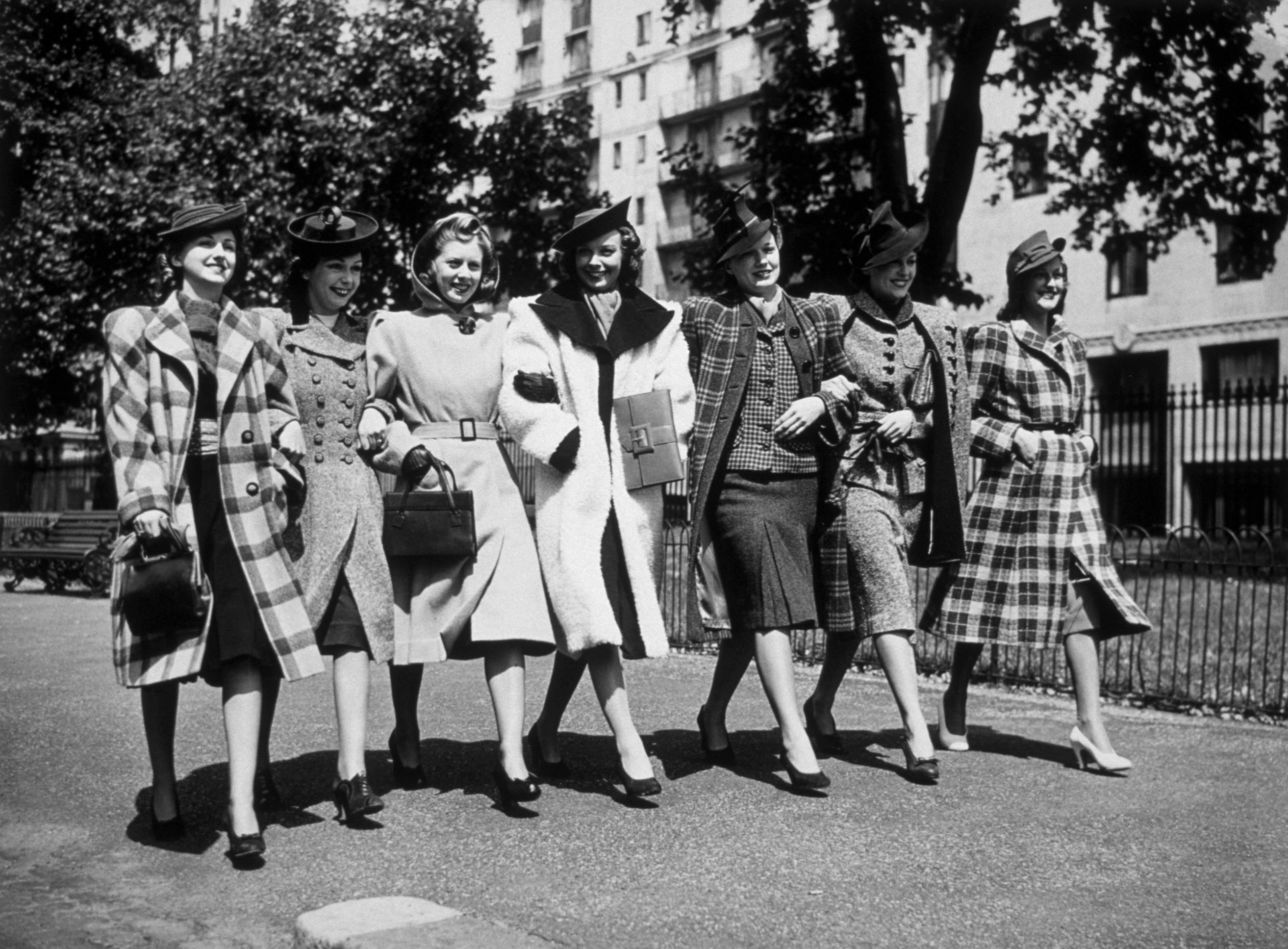
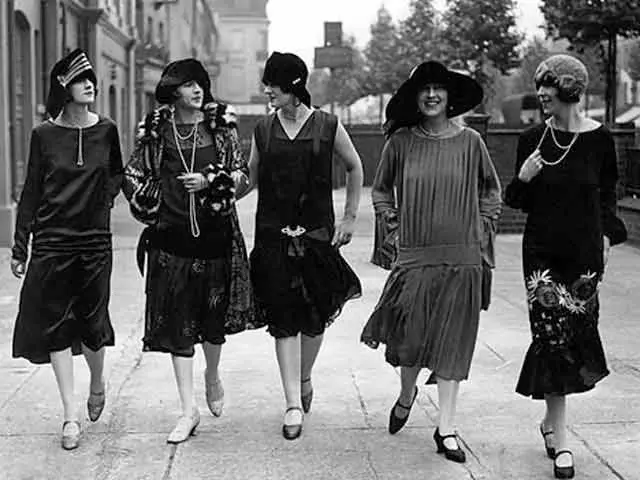
The 1940s Style Silhouette
At the start, the silhouette during the wartime era from 1930 to ’45 took on a sharper and more severe appearance compared to the graceful and shapely styles of the 1930s. The figure became slender but with a touch of masculinity, accentuated by padded shoulders.
Distinct disparities emerged between the fashion trends in the United Kingdom and the more glamorous United States, undoubtedly influenced by the limitations imposed on available materials.
A Bit of History on The 1940s Style
Fashion came to a standstill during the war, as many renowned fashion houses in Paris were forced to close or halt their operations due to the occupation. The focus of fabric mills shifted towards supporting the war effort, leading to restrictions on dress fabric under austerity guidelines. However, it is often in times of hardship that innovative solutions are born, and the 1940s were no exception.
In the absence of traditional fabrics, new materials were developed, although not all of them proved to be successful. The stringent austerity guidelines imposed during the war also gave rise to remarkably creative pattern-cutting techniques in fashion. The rules established in 1941 dictated various aspects of garment construction, such as the amount of fabric allowed, the use of trimmings, hem length, pleats, gathers, and even the number of buttons.
- Consequently, a range of clothing known as “utility clothing,” adorned with the CC41 logo, came into existence. It is worth noting the irony that these vintage items, bearing the CC41 label, now fetch high prices in the current market. The prevailing fashion aesthetic of the time can be best described as sensible, reflecting the practicality necessitated by the circumstances.
Make do and mend! 1940s Style Movement
At first, the general public had a lukewarm reception towards utility clothing. However, in 1942, designers were brought in to enhance the utility styles and simplify the manufacturing process. This led to the birth of the elegant 1940s styles that we admire and adore today. The designers employed innovative pattern-cutting techniques, such as draping, peplums, gores, the use of shoulder pads, and intricate gathers at the bust line and shoulders, to make the most of the fabric.
As a result, the silhouette became more square or box-like, the waistline slightly higher, and the focus shifted to the shoulders and head. While utility clothing played a significant role in fashion during that time, it’s important to acknowledge the incredible talent of women in home dressmaking. Many girls were taught this skill from a young age, and women became experts at transforming their existing dresses into more contemporary styles.
This resourcefulness gave rise to the well-known term “make do and mend.” A classic day dress could be easily revamped by altering the neckline with gathers or tabs, and hemlines were shortened, leaving excess fabric to rework sleeves or create embellished pockets.
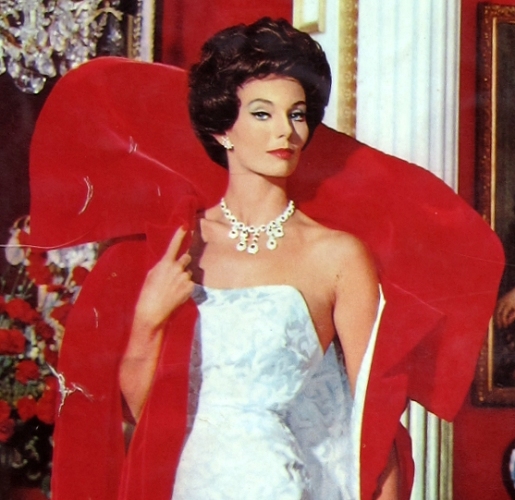
Due to the constraints imposed on women and the years of rationing and dedicating themselves to the war effort, women, always inventive and determined to look their best, found other ways to feel good and presentable. Dresses were frequently revamped, and girls would raid their mother’s collection of costume jewellery to breathe new life into well-worn outfits.
Red lipstick became a staple, offering a boost to their spirits (*it’s worth noting that red lipstick in the 1940s had more of an orange-red hue than the vibrant red we associate with that era).
However, perhaps the most thrilling aspect of 1940s style, and one that enthusiasts of this era love to emulate is the iconic hairstyles. While hair was not constrained, it was often cut shorter for war work and styled in opulent and innovative ways. Victory rolls, pompadours, snoods, and turbans became the epitome of fashion for women, as hair became their form of expression when other resources were scarce. If you truly want to capture the essence of the 1940s style, a modern hairstyle simply won’t suffice.
Fashion Etiquette
In the midst of challenging times, societal norms demanded that women adhere to certain standards of decorum when venturing outside their homes. It was customary for them to never leave without donning stockings, a hat, and an assortment of accessories. Interestingly, even as work attire became more commonplace, the audacity of wearing trousers persisted well into the early 1950s.
Although trousers found greater acceptance in the United States, they were only embraced by the daring few for special occasions such as dances. Moreover, due to scarce resources, women had to employ creative tactics to simulate the appearance of stockings. Some resorted to drawing a line on their legs, while others experimented with the renowned technique of gravy browning. However, it seems that not many enthusiasts were inclined to adopt the latter method.
-
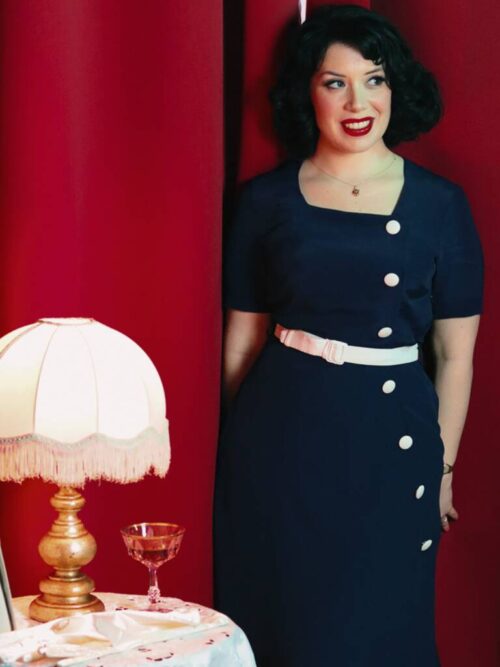
Olivia 1940’s dress in French navy
£94.00 Select options This product has multiple variants. The options may be chosen on the product page -
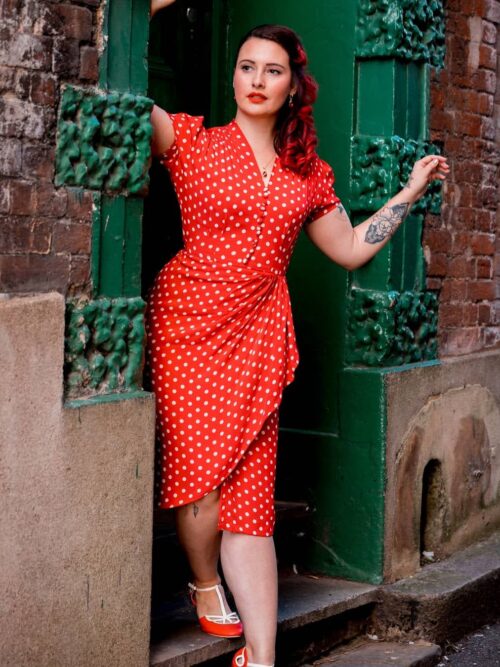
Mabel 1940’s dress in red Polka Dot
£94.00 Select options This product has multiple variants. The options may be chosen on the product page -
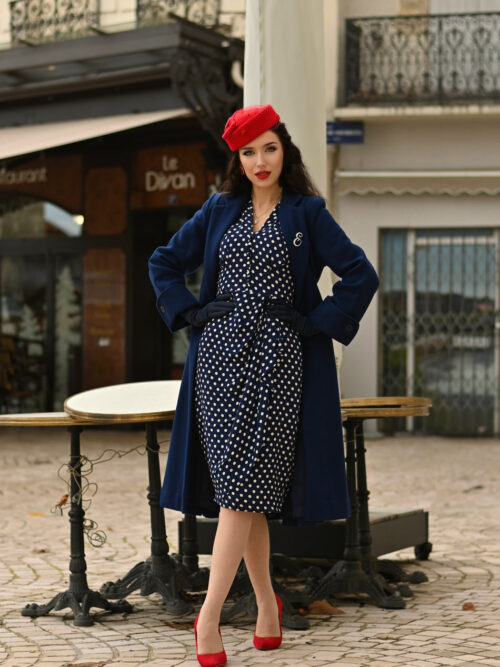
Mabel 1940’s 3 quarter sleeve polka dot dress
£94.00 Select options This product has multiple variants. The options may be chosen on the product page -
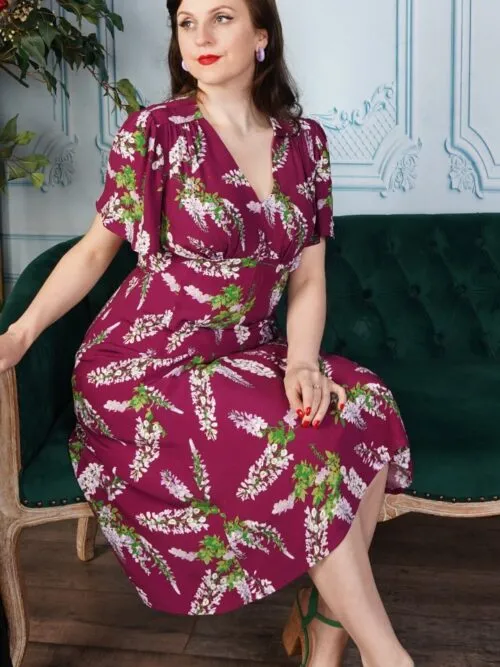
Betty Tea Dress in Plum Wisteria
£106.00 Select options This product has multiple variants. The options may be chosen on the product page
Women at Work: Practicality
Due to evolving societal expectations, women found themselves compelled to engage in agricultural labour in the absence of men. Consequently, a fashion trend emerged in the 1940s, showcasing the ubiquity of dungarees, jeans, trousers, and the fashionable turban-style headscarf.
Even Hollywood, despite its glamorous reputation, was not immune to the regulations imposed during the war. As a result, numerous renowned actresses were depicted on screen wearing clothing that reflected a more practical and utilitarian style.
This particular shift in fashion ultimately paved the way for the introduction of workwear jeans, specifically tailored to embody a more feminine aesthetic.
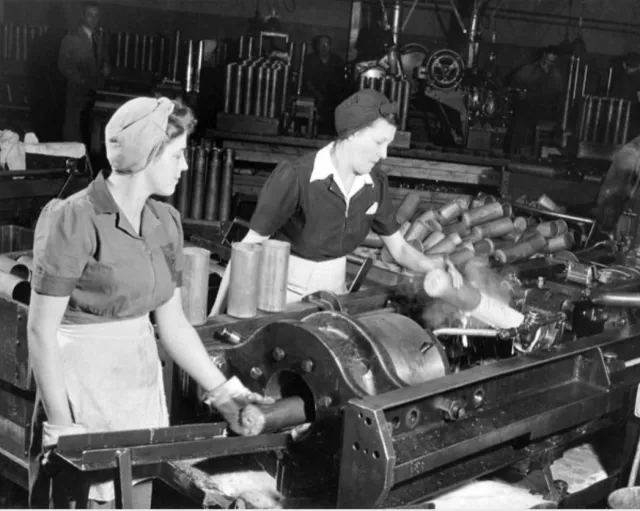

1940s tea dress
When the 1940s style comes to mind, the tea dress is often the first image that pops up. This particular dress was a staple for dances, featuring lovely floral patterns, a flared skirt, a charming sweetheart neckline, and cute puffed cap sleeves.
It’s safe to say that no other outfit is as closely associated with this decade as the tea dress. However, there were numerous dresses during this era that fell into this category. One popular choice was the shirt dress, which was highly versatile and practical, offering a more functional style.
Additionally, some individuals opted to revamp 1930s dresses into a more contemporary look by altering the neckline to a sweetheart style.
Film noir
The rise of American-inspired eveningwear brought a distinct and sophisticated appearance to drapery in evening garments. This was achieved through the incorporation of low-hanging sarong skirts, modest bodice designs accentuated by padded shoulders, and embellishments such as sequin motifs or jewellery. The chosen fabrics, in colours of black, white, navy, or red, reflected simplicity while exuding elegance.
Shop The 1940s Style
Whether you want the 1940s land girl look or Hollywood glam, check out our capsule wardrobe shopping guide to get you started:
- Parachute silk knickers
- Seamed Stockings
- Day or tea dress (preferably made in rayon or viscose)
- High-waisted trousers or ‘work jeans’
- Swing skirt (length to just over knees)
- Pussy bow blouse or shirt style
- 40s Shirt Waister Dress for Everyday
- Bolero jacket
Must-have accessories: –
- Snood
- Hat
- Orange-red lippy
- Platform shoes
- Diamante brooches and earrings
-
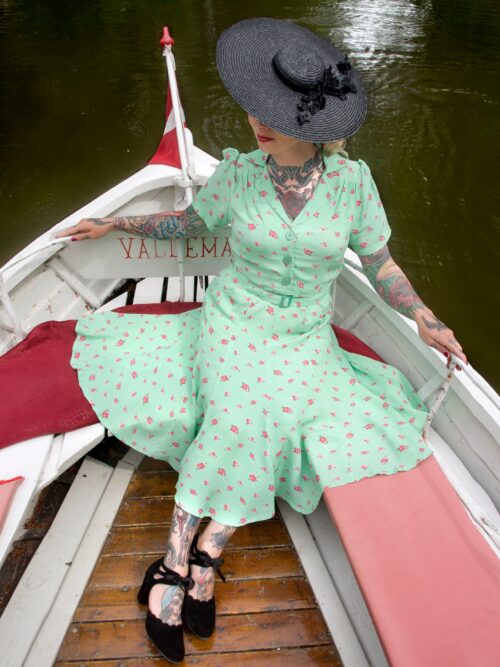
Lisa 1940s Tea Dress UK Size 16
£94.00 Add to cart -
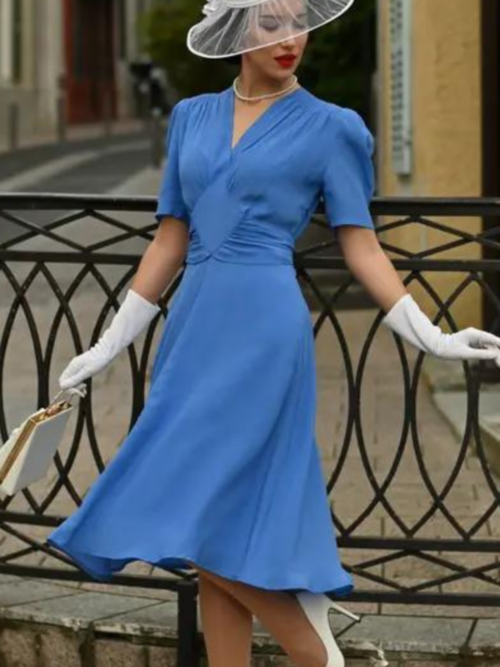
Ruby 1940s dress in Palace Blue UK Size 16
£94.00 Add to cart -
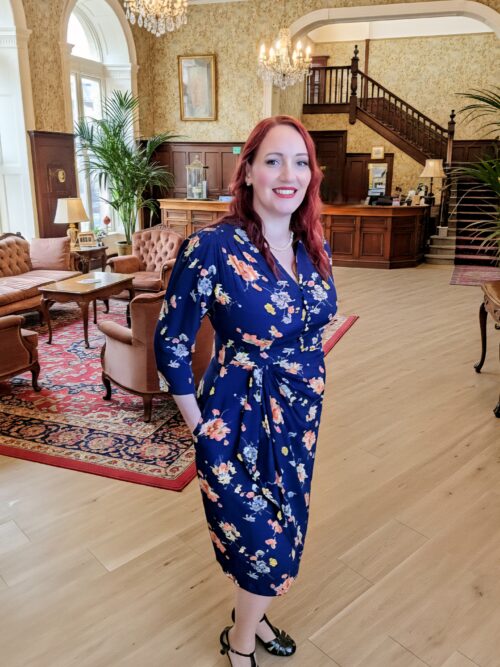
Mabel Dress in Navy Mayflower with 3 quarter sleeves
£94.00 Select options This product has multiple variants. The options may be chosen on the product page -
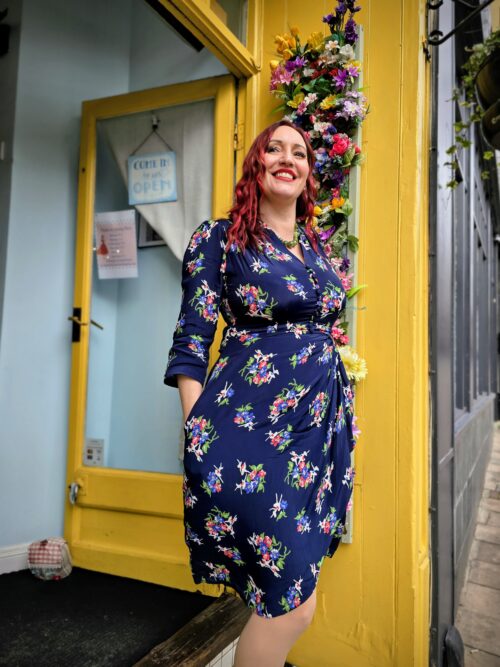
Mabel dress in navy floral dancer with 3 quarter sleeves
£94.00 Select options This product has multiple variants. The options may be chosen on the product page -
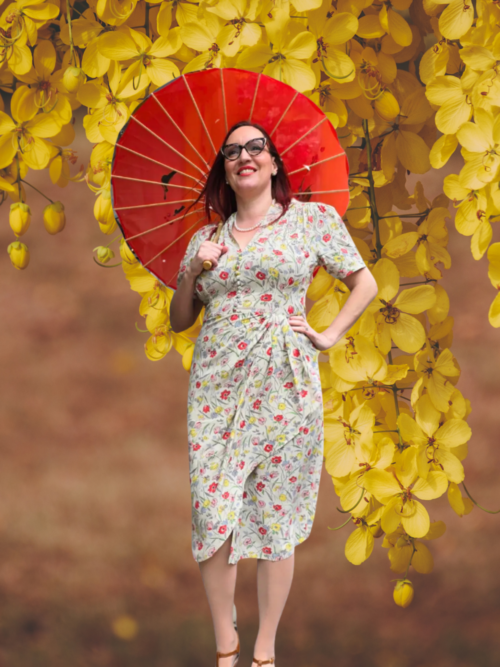
Mabel Waterfall dress in Poppy Print UK Size 16
£94.00 Add to cart -
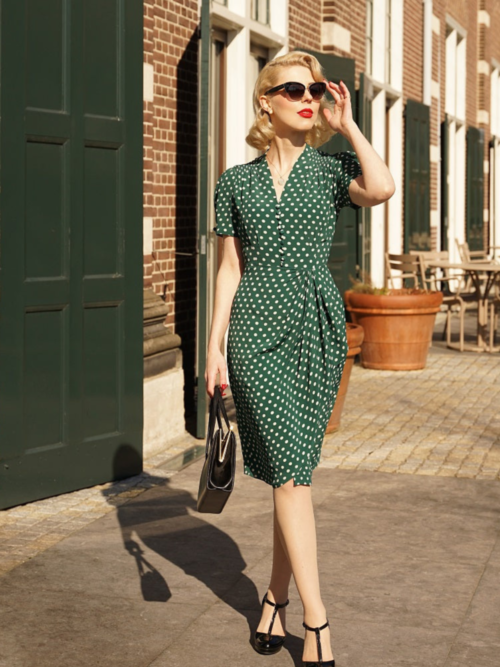
Mabel 1940’s Dress in Green Polka Dot UK Size 18
£94.00 Add to cart -

Mabel 1940’s 3 quarter sleeve polka dot dress
£94.00 Select options This product has multiple variants. The options may be chosen on the product page -
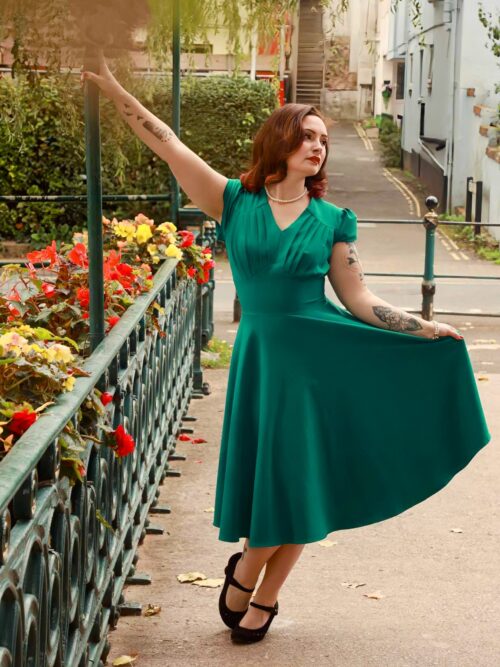
Gilda swing dress in Emerald Green
£94.00 Select options This product has multiple variants. The options may be chosen on the product page -
Sale!
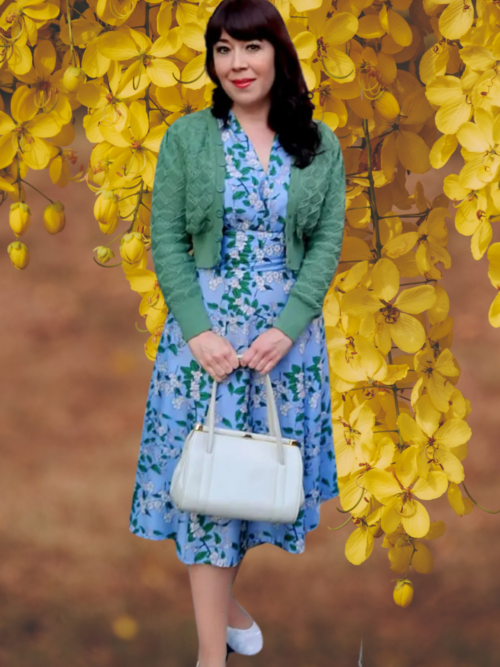
Rita 1940s tea dress UK Size 12
Original price was: £145.00.£72.00Current price is: £72.00. Add to cart -
Sale!

Summer Bouquet dress & bolero jacket UK size 12
Original price was: £66.00.£30.00Current price is: £30.00. Select options This product has multiple variants. The options may be chosen on the product page -
Sale!
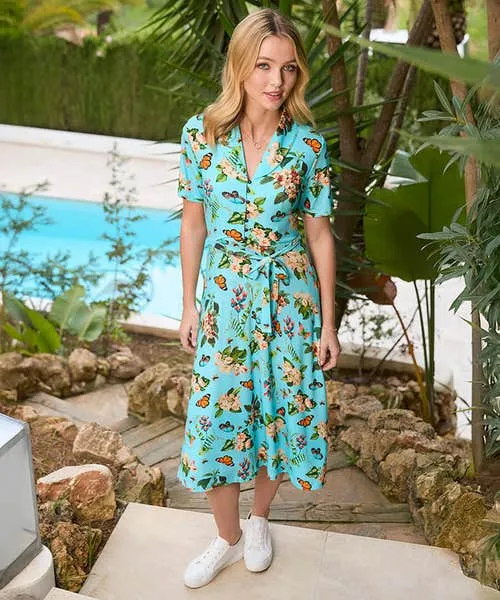
Erin butterfly tea dress UK Size 16
Original price was: £60.00.£30.00Current price is: £30.00. Add to cart -
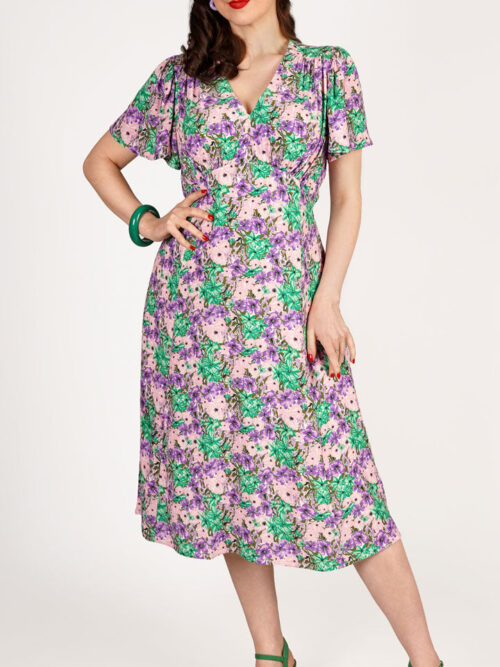
Betty Tea Dress in Spring Garden
£106.00 Select options This product has multiple variants. The options may be chosen on the product page
